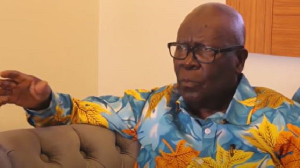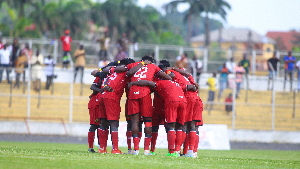After snatching oil dealers’ 109.2 bn
OMCs COMMIT ANOTHER RAPE
…They charge double rent illegally
Special Report By Livingstone Pay Charlie
& Dickson Gbogblor
In spite of having their rent charges catered for in the formula for margins’ distribution on the sale of petroleum products, Oil Marketing Companies (OMC’S) operating in Ghana have taken their greed to another level by demanding rent again from their dealers who manage the fuel stations.
Failure to pay the second rent for the same landed fuel station is an automatic guarantee for the OMC’s to deal with you severely, Capitaline has gathered.
This paper has gathered that dealers pay as much as GH¢2,000 (¢20 million old cedis) and over as rent per month and this goes to the OMCs.
The situation, which clearly violates rules by state regulatory agency of the sector, the National Petroleum Authority (NPA), is causing some uneasiness and disquiet among fuel dealers.
According to the current Margin Split Module developed by the NPA, OMCs are supposed to earn GH¢0.0587 on every litre of fuel sold, while GH¢0.0461 goes to the dealers on the same fuel quantity pegging.
The GH¢0.0587 per litre for the OMCs according to experts from the NPA covers everything from construction cost of a model retail station to other investments in running it.
Thus, the NPA module directs a 60 per cent for OMCs and 40 per cent for dealers as Return on Equity (ROE) and this is also captured in the GH¢0.0461 for dealers.
Unfortunately, the rule by the NPA has been thrown into the dustbin by the OMCs, a situation presenting Ghana as a modeled ‘banana republic’. According to research computations by Capitaline’s team of investigative reporters, three key OMCs (i e. TOTAL, SHELL and GOIL) have from January 4 this year snatched over ¢109.2 billion being legitimate margins due dealers.
With regards to the rent charges, the NPA module on margins, set aside a grand total of GH¢405,489 (¢401 billion) to cater for the construction and all other materials for the operation. From that ¢ 4.1 billion old cedis, GH¢83,843 (¢8.4 billion) being 20.7 per cent is set aside for other services (administrative overheads and other contingency services, among others).
In circumstances where dealers cannot afford to pay upfront before getting stock, the NPA module provides avenue for OMCs to earn substantial interest for supplying fuel to dealers on credit.
Headed Working Capital Interest Expense in the NPA module, GH¢1,968 is allocated as capital for an OMC to operate a one fuel station. The dealer pays GH¢4,411 out of a total of GH¢110,834 as interest. Thus GH¢4,411 representing 3.98 per cent of total margin split is deducted from GH¢0.0461 per litre margin meant for dealers.
Clearly, OMCs in Ghana are having a field’s day, robbing poor Ghanaian dealers. They take double rent and strangulate dealers.
As this massive rape continues and billions of dollars are spirited away from Ghana’s economy to Cosmopolitan Europe, the NPA looks on unconcerned.
In a recent call – up to their offices, a key NPA officer only blurted out, “We are going to have meetings with them {OMCs}”.
For over a week now that Capitaline has put in an official request for interview on the prevailing issues in the industry, no response has yet been heard from the NPA.
The same applies to TOTAL and Shell. Only Ghana Oil Limited (GOIL) responded to our request as at last Tuesday and feverish collaborations are on-going for an interview.
In our subsequent editions, Capitaline will drop a bomb on the trillions of cedis that TOTAL took away to France last year.
We shall also be reporting on a very explosive action, the Ghanaian dealers are planning to undertake. Capitaline was hinted over the weekend that this simmering action definitely has dire consequences for the Ghanaian economy.
NPA’s Calculations/Directives
The NPA in a letter, dated March 17, 20011 to the Association of OMCs after several pleas from the dealers reminded OMCs that the computations for the margins took into consideration, among other factors such as “25 percent interest rate on debt (up to 5 years) and 20 percent interest rate on Overdraft facilities per annum.”
And it is not clear why the OMCs are not ready to heed to the directives of the industry regulator.
NPA has separated dealers’ margin from the OMCs’, making it impossible for the OMCs to determine any worthless amount for the dealers in their business relationship.
The quest of the NPA to sanitize the petroleum downstream business and ensure fairness to all partners (OMCs and Dealers) has led to the introduction of a module that directed that both “OMC and Dealer use equity (40%) and debt (60%) to manage their operations.”
According to the NPA, the model applied for the margin split between the OMCs and Dealers fixed the Return on Equity (ROE) at 20 percent. The NPA explains that the “profit margins are varied for OMCs (@ 33 percent cost) and Dealers (@ 6 percent cost) to achieve the ROE of 20 percent”.
It also reflected on the assumption that each retail outlet sells 150,000 litres of fuel per month, when operating not less than 30 retail outlets across the country (Mandatory). The supposition is that an OMC sells 4,500,000 litres of fuel per month (ie. 30 X 150,000).
Hidden facts Uncovered
Investigations conducted by CapitaLine reveal that Total Ghana is paying its dealers 55.75 percent (GHc 0.0257), while GOIL is paying 67.46 percent (GHc 0.0311) of the margins approved by the NPA. OMCs Argument Tenable?
In setting the margins for OMCs, the NPA took cognizance of OMCs depreciation cost of its investment in the retail station including cost of land, the cost of holding stock financed by OMCs, administrative cost running an OMC including annual NPA license fees.
The NPA also recognized OMCs cost of providing guarantees to maintain a supply relationship with a BDC and compensate the OMC for taking risk to invest by providing for a 20 percent Return on Equity.
However, the dealers’ margin (GHc 0.0461), which is even less than the OMC margin (GHc 0.0587) by 21.47 percent covers the cost of financing such investment, operating and maintaining such investment and the financing cost of working capital invested by the dealer in the trading.
The NPA also recognizes the operational and administrative cost of running a retail outlet such as electricity etc and the cost of annual Ministries Metropolitan Municipal and District Assemblies operating permit fees and the risk taken by the dealer to invest by providing for a 20 percent Return on Equity.
Experts Look Ahead
Based on the assumptions raised above over financing and commitment components of OMCs and Dealers, the Board of NPA has approved that “the OMC margin per litre is GHc 0.0834” and that of “the Dealer margin per litre is GHc 0.065”, which in total represent about 80 percent above the existing integrated margin.
The Board has indicated that the margin increase should be implemented over a maximum period of 18 months in three phases – The first Tier will be about 70 percent of the approved margin for each PSP; the 2nd Tier will be about 85 percent of the approved margin for each PSP; and the 3rd Tier will be the full 100 percent of the approved margin for each PSP.
Business News of Thursday, 28 July 2011
Source: Capitaline newspaper
















